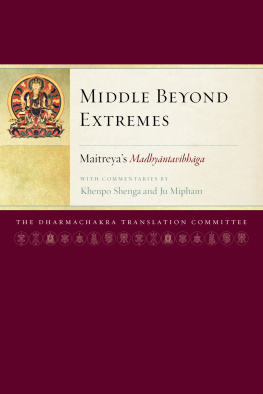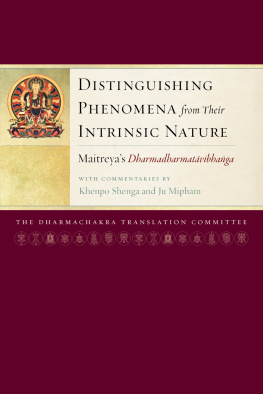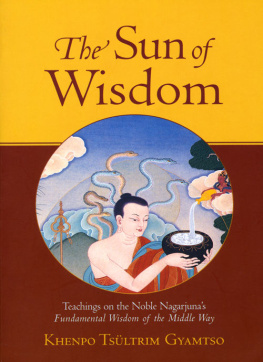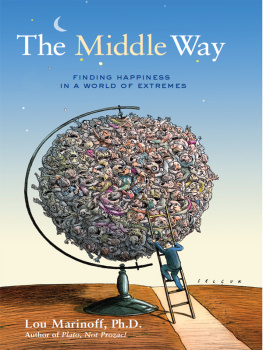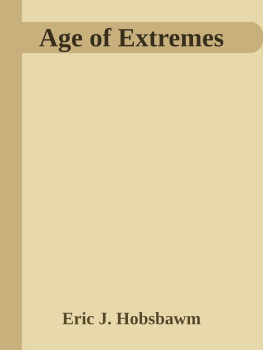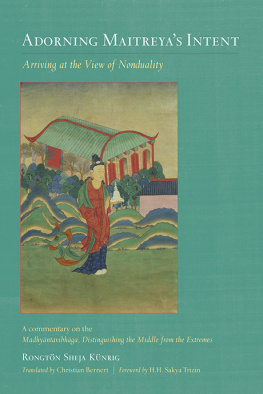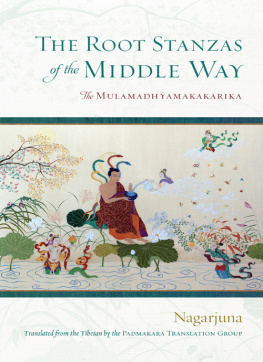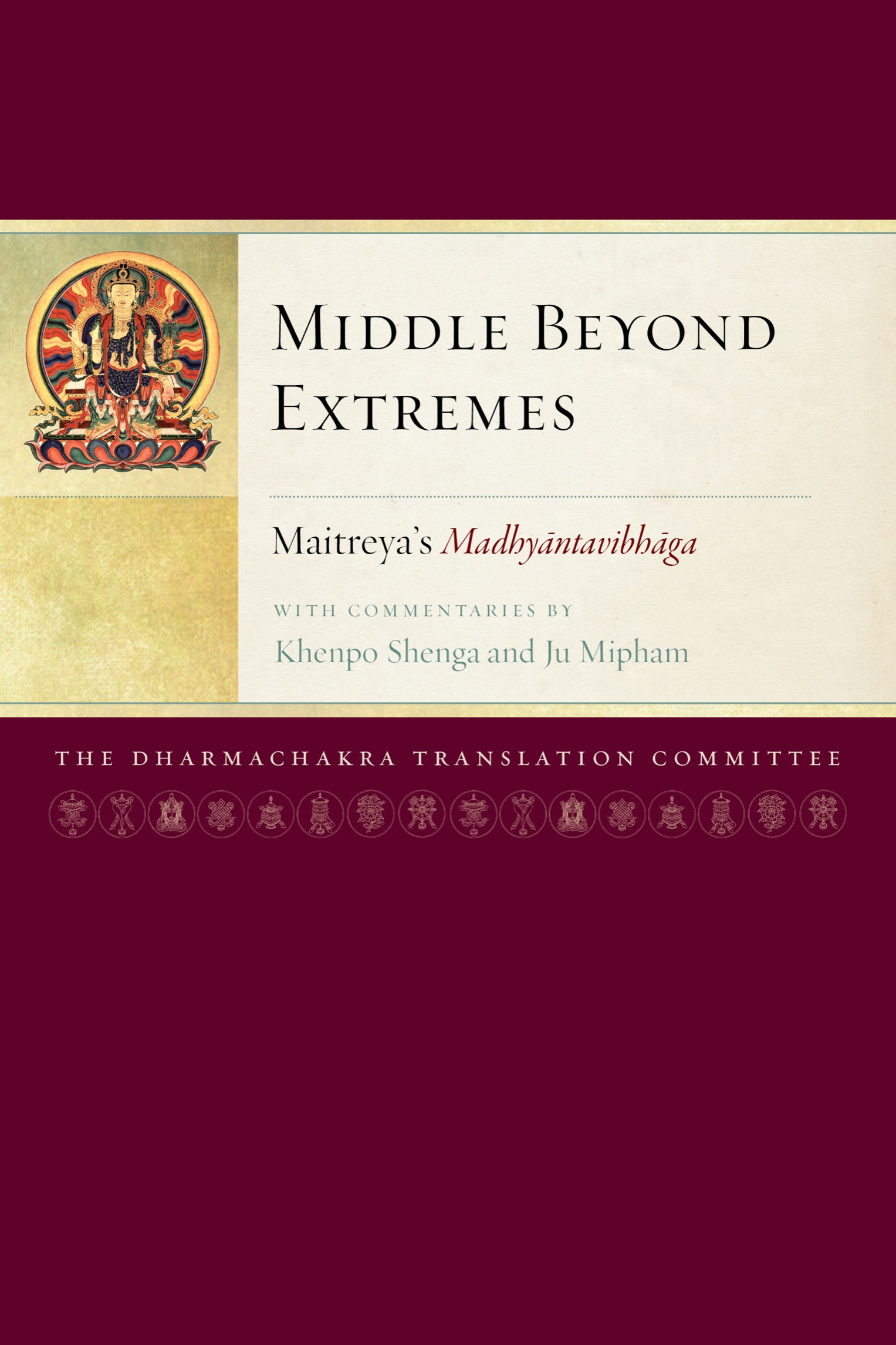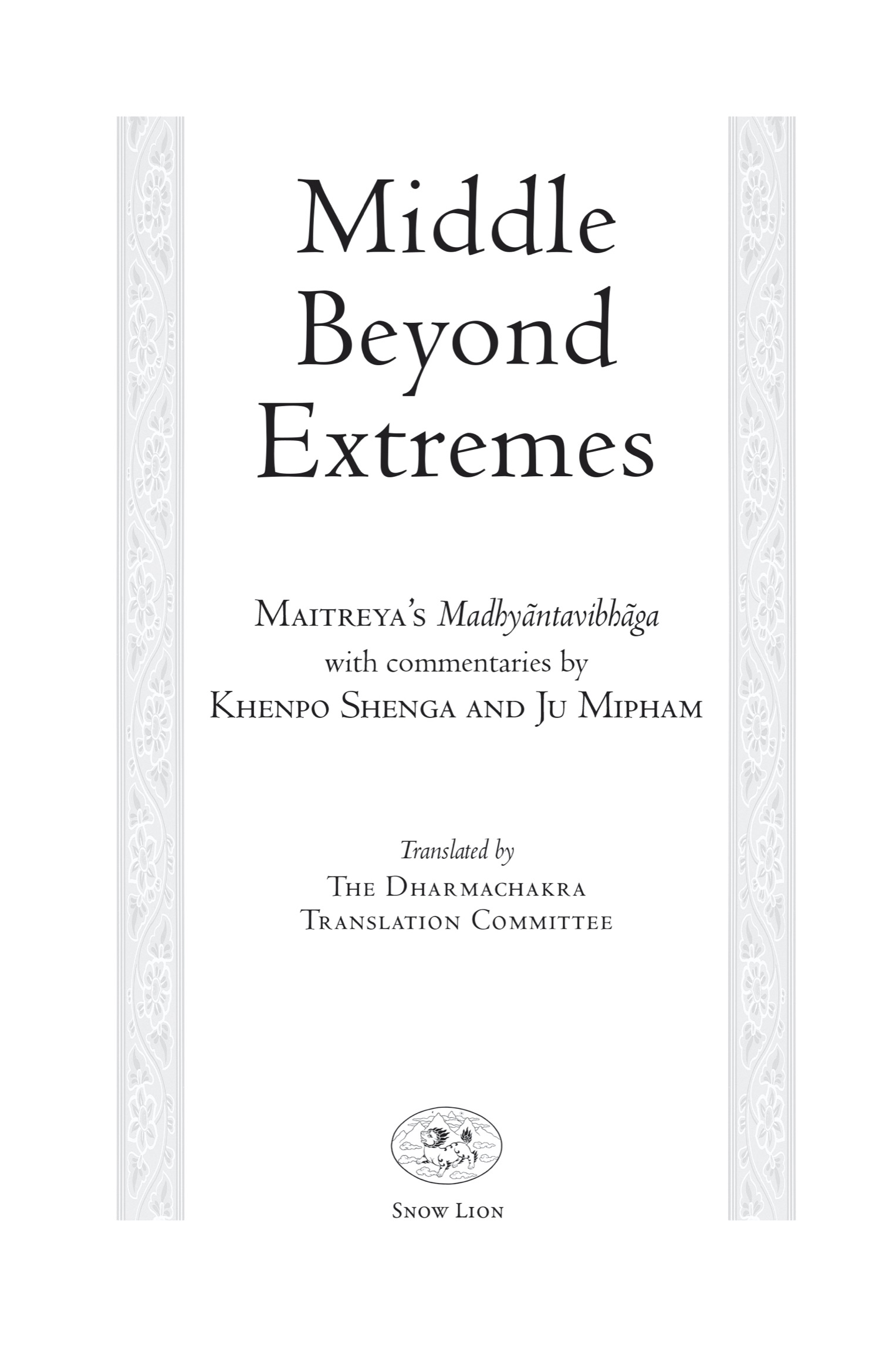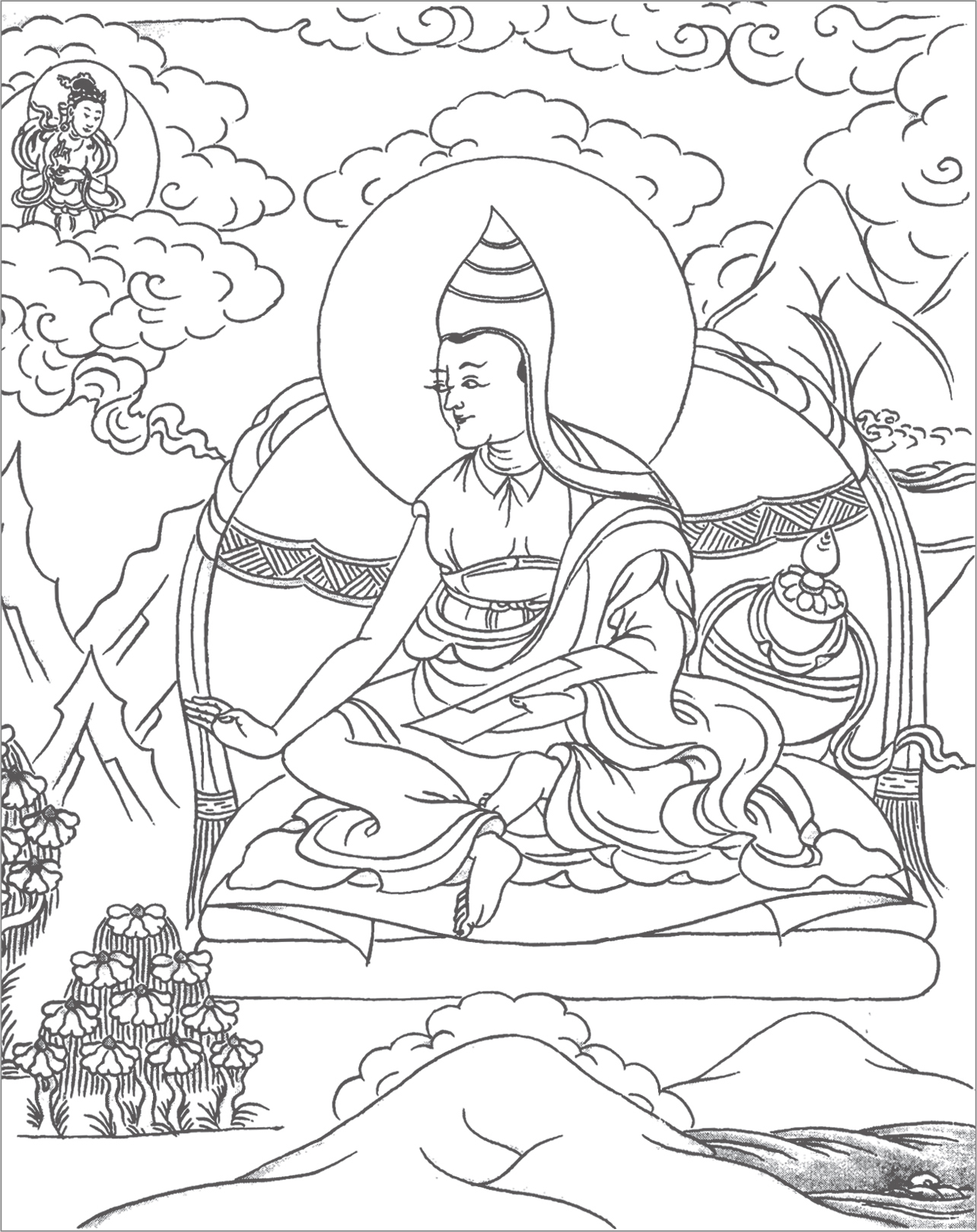Contents
Landmarks
Print Page List
S NOW L ION
An imprint of Shambhala Publications, Inc.
2129 13th Street
Boulder, Colorado 80302
www.shambhala.com
2006 by Dharmachakra Translation Committee
This edition published 2021
Illustrations:
Asanga (), by Gomchen Oleshe
Representation of Miphams outline (), courtesy of Tsadra Foundation
Cover art: Maitreya. Tibet, 15th century. Rubin Museum of Art / Art Resource, NY.
Auspicious symbols by Robert Beer.
Cover design: Gopa & Ted2, Inc.
Interior design: Gopa & Ted2, Inc.
All rights reserved. No part of this book may be reproduced in any form or by any means, electronic or mechanical, including photocopying, recording, or by any information storage and retrieval system, without permission in writing from the publisher.
T HE L IBRARY OF C ONGRESS CATALOGUES THE PREVIOUS EDITION OF THIS BOOK AS FOLLOWS :
Mi-pham-rgya-mtsho, Jam-mgon Ju, 18461912.
[Dbus mtha rnam byed kyi grel pa od zer phre ba. English] Middle beyond extremes: Maitreyas Madhyantavibhanga with commentaries / by Khenpo Shenga and Ju Mipham; translated by Dharmachakra Translation Committee.
p. cm.
Maitreyanthas work translated into English from the Tibetan translation of the original Sanskrit text.
Includes bibliographical references and index.
ISBN 978-1-55939-270-9 (hardback: alk. paper)
ISBN 978-1-55939-501-4 (paperback: alk. paper)
eISBN 9780834843998
1. Maitreyantha. Madhyntavibhaga. 2. Yogcra (Buddhism) I. Maitreyantha.
Madhyntavibhaga. English. II. Gan-phan-chos-kyi-sna-ba, Gan-dga, 18711927.
Dbus da mtha rnam par byed pai mchan grel. English. III. Title.
BQ2967.M55813 2007
294.3420423dc22
2006024698
a_prh_5.7.0_c0_r0
TABLE OF CONTENTS
Asaga

FOREWORD
by Trulshik Rinpoche
Our compassionate teacher, the fourth guide of this Excellent Eon, speaks of the well-spoken words and the commentaries. With this, he refers to the innumerable stras and tantras, as well as all the treatises that illumine their enlightened intent. The Regent Maitreyantha, lord of the ten grounds, granted five treatises to the master Asaga in the divine realm of Tuita, two of which are concerned with distinguishing. This book contains an English translation of one of these two treatises, namely Distinguishing the Middle from Extremes.
Accompanying Maitreyas teaching are two commentaries: The first, composed by Khenchen Shenga, was created by means of a classic Indian source. The book also contains the explanations by Mipham Nampar Gyalwa, our loving protector and king of Dharma. In this way, it contains, as it were, both Indian and Tibetan commentaries.
Under the auspices of the Dharmachakra Translation Committee, these texts have been translated by students of the supreme refuge, Chkyi Nyima Rinpoche. Headed by Thomas Doctor, who is devoted, committed, and knowledgeable, the translators attended lectures on the texts by learned scholars, and endeavoring to clarify their understanding, they diligently brought forth these English versions. Rejoicing in this, I wish to express my congratulations and thanks. I supplicate, pray, and invoke the truth of the Three Jewels, that whoever studies and reflects on these texts may experience the glorious two-fold accomplishment.
This was written by Trulshik of Dzarong, who is in all regards deluded, but bears the title of Khenpo, on the 15th day of the 3rd month in the fire dog year, the year 2133 of the Tibetan kings (2006).
FOREWORD
by Chkyi Nyima Rinpoche
Our teacher, the truly and completely Awakened One, the Transcendent Conqueror, is the great, implicit friend of all sentient beings, limitless in number. The teachings he gave can be divided into stra and mantra, and further into tantra, scripture, and instruction. The essential meaning of these, in turn, is explained in the classic treatises of the stra and mantra traditions. Along with those related to the mundane fields of learning, the majority of these literary works were translated into Tibetan, the language of the Land of Snows.
The preceptor ntarakita, the master Padmasambhava, and the Dharma King Trisong Deutsen, as well as the many learned and accomplished masters of India and Tibet and those who became their followers, all pursued study, teaching, translation, and the practice of meditation in a perfect manner. As a result of their altruistic works, the number of individuals who reached truly high levels of scholarly expertise and spiritual accomplishment became so large that today they cannot be counted.
The literary output of these masters includes commentaries and sub-commentaries that explain the Buddhas teachings, the classic treatises, and the mundane fields of learning. It is a literature that contains vast collections of masterful, original writings. These many thousands of volumes constitute, as it were, the one extraordinary, true treasure of Tibet, the Land of Snows. Currently this great body of literature is attracting increasing attention from many sides, and a growing number of people from all over the world engage in study, reflection, and meditation with great enthusiasm and devotion. This is undoubtedly due to an increasingly clear perception of the sacred Dharmas quality, purpose, and scope.
In his Five Teachings the protector Maitreya, the Regent who has mastered the ten grounds, reveals fully and flawlessly the view, meditation, conduct and fruition that is accomplished through the Great Vehicle. With utmost profundity his teachings reach far and wide; they are a treasury of scripture, reasoning, and oral instruction.
This book contains one among his five treatises, Distinguishing the Middle from Extremes. It is accompanied by two commentaries: Khenchen Shengas elucidations, which are all drawn from a classical Indian source, and the explanations of the supreme scholar, Mipham Chokley Nampar Gyalwa. These English translations were prepared under the auspices of the Dharmachakra Translation Committee. They were produced by a group of translators headed by my student, Thomas Doctor, who is devoted, committed, and knowledgeable. The translators followed a series of lectures on the texts, and they have worked hard to clarify their understanding with the help of several scholars. I wholeheartedly delight and rejoice in their efforts and repeatedly toss flowers of praise.
To those who read this book I would recommend following a program of lectures, since this is the best way to meet these texts. In any case, it is important that one actively seek to gain a clear understanding of these teachings. Whoever practices them will, without a doubt, before long accomplish the stage of great enlightenment and, by relying on factors such as the six transcendences, arise as a great captain to guide all wandering beings. It is therefore important for us all to study and correctly practice these teachings, and so I humbly request that these issues be taken to heart.

